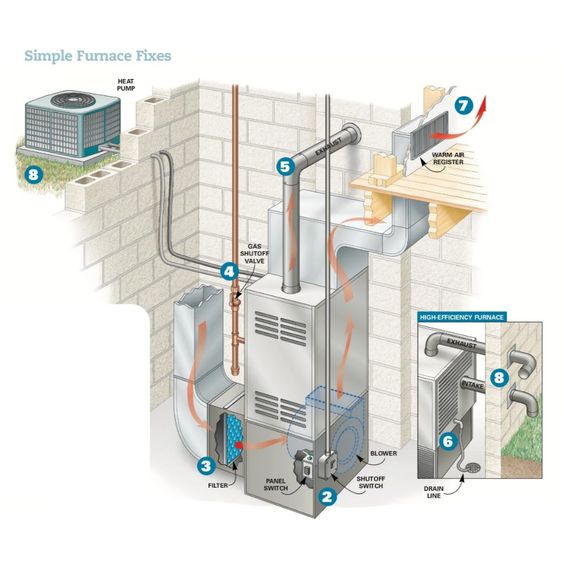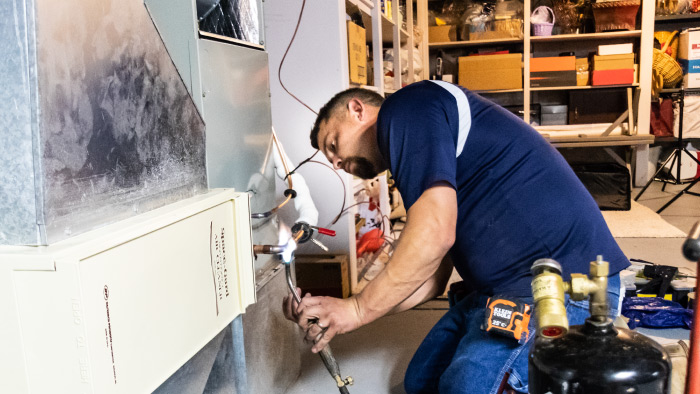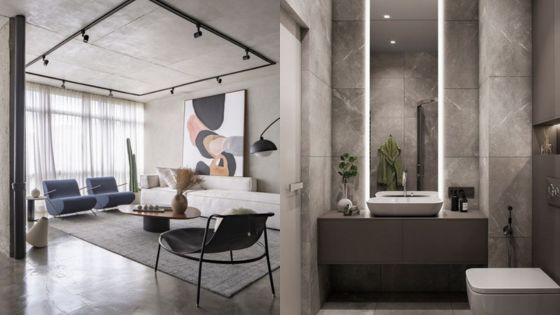

A properly functioning furnace is essential when it comes to ensuring a cozy and comfortable living environment during the colder months. As a homeowner, understanding the basics of furnace installation can save you time, effort, and money in the long run. In this featured post, we will provide you with valuable tips and guidelines to help ensure a successful furnace installation process.
1. Conduct Proper Research
Before diving into any major HVAC project, it’s crucial to conduct thorough research. Take the time to educate yourself about various furnace options available in the market, different fuel sources (such as natural gas in ga, oil, or electric), energy efficiency ratings, and average costs. Equipping yourself with this knowledge will empower you to make informed decisions when selecting your new furnace installations in Cincinnati.
2. Consult an HVAC Professional
While there are many DIY enthusiasts out there, attempting to install a furnace without professional expertise is not recommended. A qualified HVAC contractor possesses the knowledge and experience required for a safe and efficient installation process. They can assess your home’s specific heating needs and recommend suitable options based on factors such as size, insulation quality, ductwork layout, and more.
3. Proper Sizing Matters
One of the most critical factors in furnace installation is ensuring proper sizing. An oversized or undersized furnace can lead to multiple issues, such as short cycling (frequent on/off cycles), energy inefficiency, uneven heating throughout the house, increased wear and tear of components, and decreased overall indoor comfort.
A professional HVAC technician will perform load calculations that take into account various factors unique to your home’s layout—square footage, insulation values of walls/ceiling/windows/doors—as well as regional climate considerations.
4. Ductwork Assessment
During the installation process, your chosen HVAC contractor should thoroughly inspect your existing ductwork system for potential flaws or inadequate connections that could impede airflow. In some cases, modifications or repairs may be necessary to ensure optimal performance from your new furnace.
If any issues are found, seeking reliable furnace repair services can help resolve them before they impact your system’s performance and longevity. Ensuring your ductwork is in top condition will maximize the effectiveness of your new furnace and contribute to better overall indoor air quality.
In addition, addressing any leaks or gaps in the ductwork will prevent heat loss and maximize energy efficiency. Well-designed, properly sealed ducts help distribute warm air evenly throughout your home, ensuring consistent temperatures in all rooms.
5. Energy Efficiency Considerations
Investing in an energy-efficient furnace not only reduces your environmental impact but also leads to long-term savings on utility bills. Look for furnaces with high Annual Fuel Utilization Efficiency (AFUE) ratings. The AFUE rating indicates the amount of heat produced compared to the fuel consumed, with higher ratings indicating greater efficiency.
Consider upgrading to a condensing furnace if possible—a type that extracts additional heat from combustion gases using a secondary heat exchanger. This advanced technology improves efficiency further by minimizing wasted heat.
6. Don’t Forget Regular Maintenance
Once your new furnace is installed and running smoothly, it’s vital to continue regular maintenance and service to keep it operating at its best. Schedule annual tune-ups with a trusted HVAC professional who will perform essential tasks such as filter replacement, cleaning of burners and coils, lubrication of moving parts if applicable, inspection of electrical connections, and overall system performance assessment.
By maintaining a diligent maintenance routine for your furnace, you not only enhance its lifespan but also increase energy efficiency and decrease the likelihood of breakdowns during cold seasons when you depend on its function the most.
7. Proper Ventilation and Combustion Air Intake
An often overlooked aspect of furnace installation is ventilation and combustion air intake. Proper ventilation ensures the safe removal of combustion gases, such as carbon monoxide, from your home. An HVAC professional will assess your current ductwork and make any necessary adaptations to ensure adequate airflow.
Additionally, your furnace requires a fresh air source for efficient combustion. This may involve installing additional air intake vents or ensuring sufficient supply through existing openings.
8. Programmable Thermostats and Zoning Systems
To take control of your home’s heating and optimize energy usage, consider pairing your new furnace with programmable thermostats or zoning systems. Programmable thermostats allow you to schedule temperature adjustments based on your household’s occupancy patterns, saving energy when you’re away or asleep while maintaining comfort when you’re home.
Zoning systems divide your home into separate heating zones, each with its own thermostat. This enables you to adjust temperatures independently in different areas of the house according to individual comfort preferences or room usage patterns.
Conclusion
When it comes to furnace installation, being well-informed is key. Conduct thorough research, consult experts, ensure proper sizing and ductwork assessment, consider energy-efficient options available in the market, and stay committed to regular maintenance practices. By following these tips and guidelines as a homeowner, you can enjoy increased comfort while maximizing energy efficiency and ultimately saving both time and money in the long run.
- 0shares
- Facebook0
- Pinterest0
- Twitter0



